Port rzeczny w starym korycie Warty
River port in the old Warta riverbed
© Nardowe Archiwum Cyfrowe
POL
near Poznań
Fetching images...
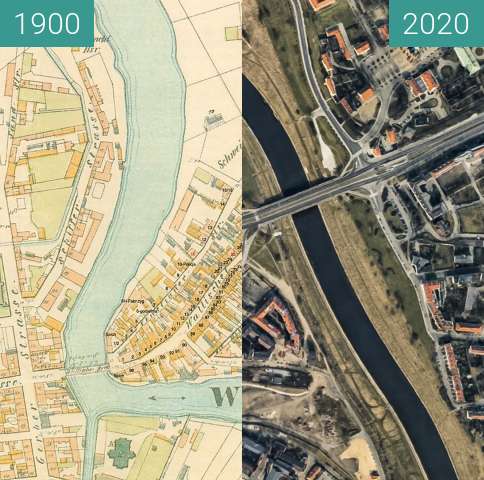
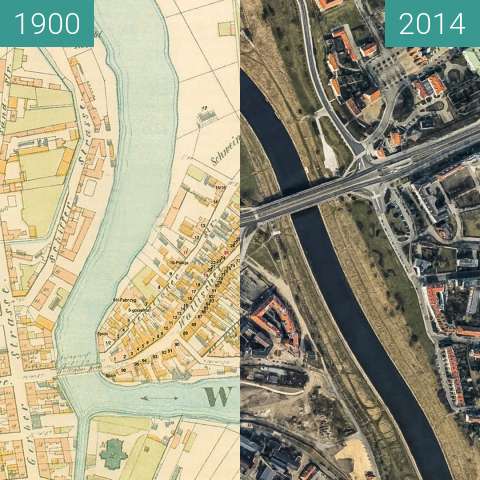
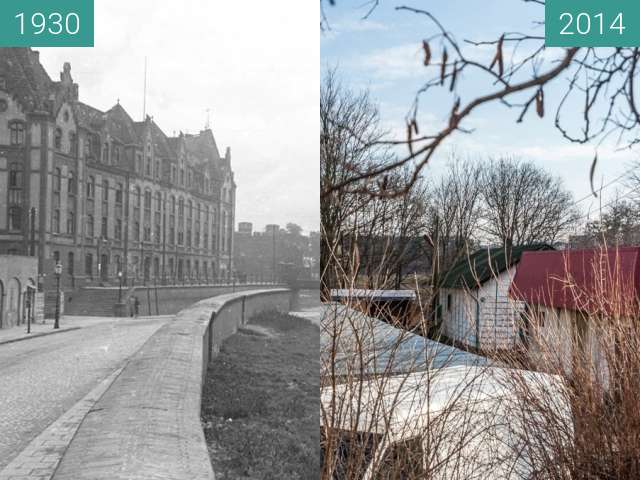
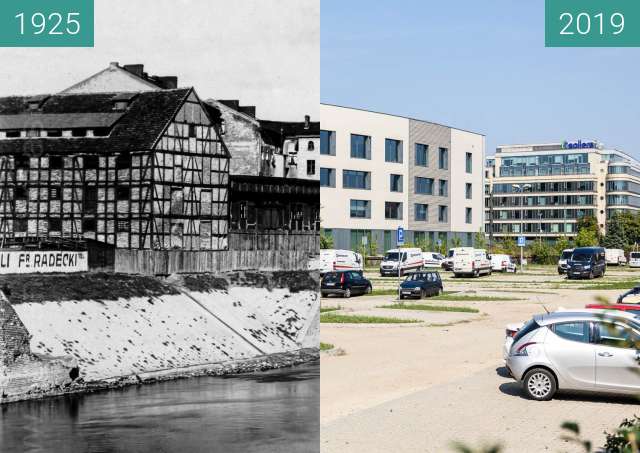
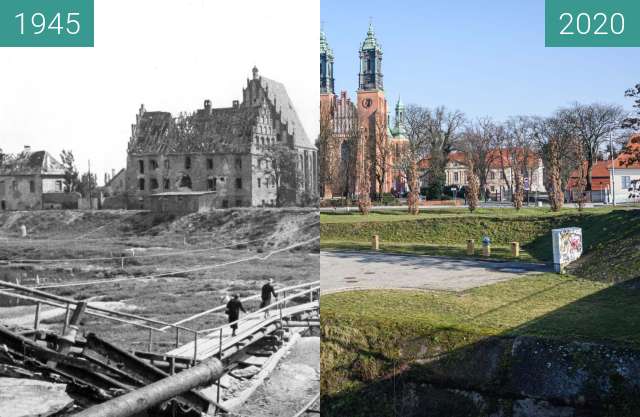
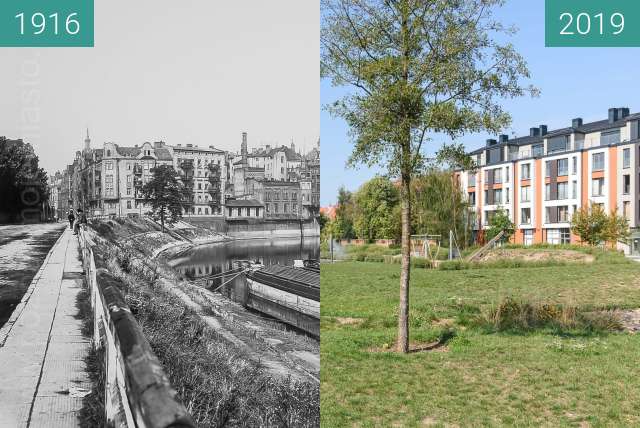
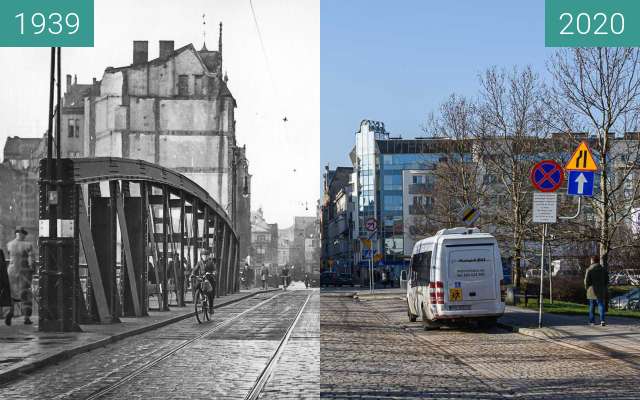
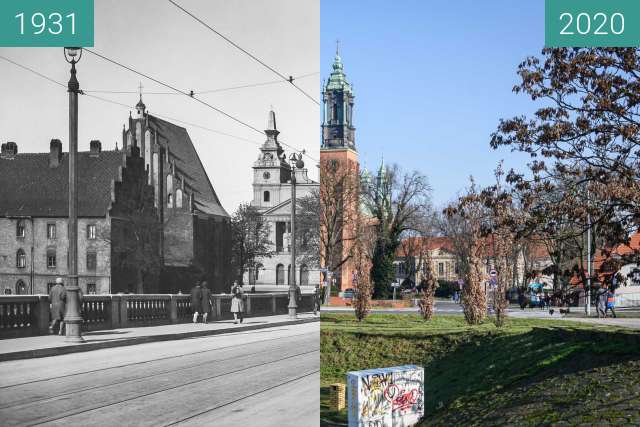
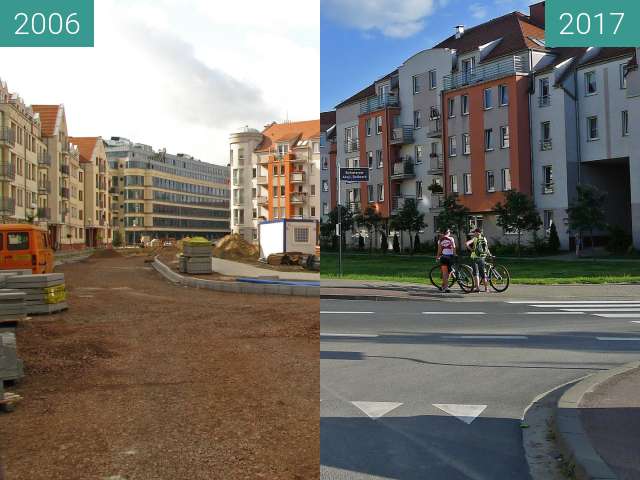
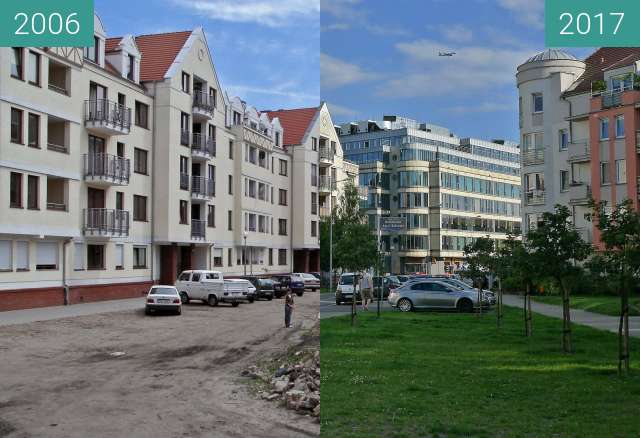
Barki w porcie w starym korycie rzeki Warta.
Port powstał z inicjatywy władz miasta w latach 1896-1902 na Warcie. Wcześniej w mieście działało kilka nabrzeży przeładunkowych (również m.in. targ solny i chwaliszewski targ rybny), a port powstał w miejscu jednego z nich – bulwaru Kleemana. Ulokowany był on na ulicy Szyperskiej, w pobliżu mostu Chwaliszewskiego. Łącznie teren zakupiony przez miasto miał powierzchnię 57 000 m².
Wybudowane nabrzeże miało 8,5 m wysokości, 704 m długości i ciągnęło się od dawnego bulwaru Kleemana do mostu kolejowego koło Tamy Garbarskiej. Opierało się na wbitych na 5 metrów w dno rzeki żelaznych słupach. Koryto rzeki pogłębiono. Na nabrzeżu funkcjonowało 5 dźwigów portowych o ładowności 1,5 t, 2 żurawie bramowe o ładowności 2 t oraz dziewięć koryt do przesypu węgla z wagonów na barki. Port miał również połączenie kolejowe z dworcem Tama Garbarska. Bocznica portowa posiadała 17 torów i 43 rozjazdy. Jednocześnie przy nabrzeżach mogły zacumować w podwójnym rzędzie 42 barki o ładowności 400 ton lub 36 barek o ładowności 600 ton.
Oficjalne otwarcie portu miało miejsce 1 października 1902 roku pod nazwą Przeładownia Miejska. W roku 1913 przeładowano w nim 220 tys. ton towarów (głównie zboże, mąki, cukier, płody rolne, spirytus, cegłę, piasek, cement, pasze, nawozy i wyroby metalowe). Transportowano towary do Szczecina, Hamburga, Frankfurtu nad Odrą, Kostrzyna, Berlina i Gorzowa.
Po przyłączeniu Poznania do Polski w 1919 port podupadł, by znów ożyć po podpisaniu umów celnych z Niemcami w 1923. Rok później powołano Żeglugę Wielkopolską. W 1926 przeładowano 120 tys. ton towarów, a w latach 1926-1932 przetransportowano przez Poznań łącznie 300 tys. ton węgla. Najbardziej dochodowe lata w całej historii portu to okres 1926-1932 (najlepszym sezonem był 1929/1930 – zacumowano wtedy 724 statki i przeładowano 15 918 wagonów).
Podczas bitwy o Poznań w 1945 port został zniszczony w 95% i nigdy nie został w pełni odbudowany. W sierpniu 1945 posiadał sześć statków z napędem własnym o łącznej sile maszyn 1200 HP i łącznym tonażu 1600 ton, 14 barek o łącznym tonażu 3700 ton oraz statek wycieczkowy kursujący do Puszczykowa.
W okresie 20 lipca 1981 – 15 czerwca 1983 odbył się generalny remont nabrzeża portowego.
Źródło: https://pl.wikipedia.org/wiki/Port_rzeczny_w_Poznaniu
Barges in the port in the old riverbed of the Warta River.
The port was established on the initiative of the city authorities in the years 1896-1902 on the Warta river. Earlier, there were several transshipment quays in the city (including, among others, the salt market and the Fish Market in Chaliszów), and the port was built in place of one of them - Kleeman Boulevard. It was located on Szyperska Street, near the Chwaliszewski Bridge. In total, the area purchased by the city had an area of 57,000 m².
The built waterfront was 8.5 m high, 704 m long and stretched from the former Kleeman boulevard to the railway bridge near the Garbarska Dam. It was based on iron pillars embedded 5 meters into the bottom of the river. The riverbed was deepened. There were 5 port cranes with a load capacity of 1.5 t, 2 gantry cranes with a load capacity of 2 t, and nine trays for transferring coal from wagons to barges on the quay. The port also had a railway connection with Tama Garbarska station. The port siding had 17 tracks and 43 switches. At the same time, 42 barges with a capacity of 400 tons or 36 barges with a capacity of 600 tons could moor in a double row at the quays.
The official opening of the port took place on October 1, 1902 under the name City Reloading. In 1913, 220,000 were reloaded there. tons of goods (mainly grain, flour, sugar, agricultural products, spirit, brick, sand, cement, feed, fertilizers and metal products). Goods were transported to Szczecin, Hamburg, Frankfurt (Oder), Kostrzyn, Berlin and Gorzów.
After joining Poznań to Poland in 1919, the port declined to revive again after signing customs contracts with Germany in 1923. A year later, Wielkopolska Shipping was established. In 1926, 120,000 were reloaded tons of goods, and in 1926-1932 a total of 300,000 were transported through Poznań tons of coal. The most profitable years in the entire history of the port were 1926-1932 (the best season was 1929/1930 - 724 ships were moored and 15,918 wagons were reloaded).
During the battle of Poznań in 1945, the port was destroyed in 95% and was never fully rebuilt. In August 1945, it owned six self-propelled vessels with a total power of 1,200 HP and a total tonnage of 1,600 tonnes, 14 barges with a total tonnage of 3,700 tonnes and a cruise ship sailing to Puszczykowo.
In the period July 20, 1981 - June 15, 1983, a general renovation of the port quay took place.
Source: https://pl.wikipedia.org/wiki/Port_rzeczny_w_Poznaniu